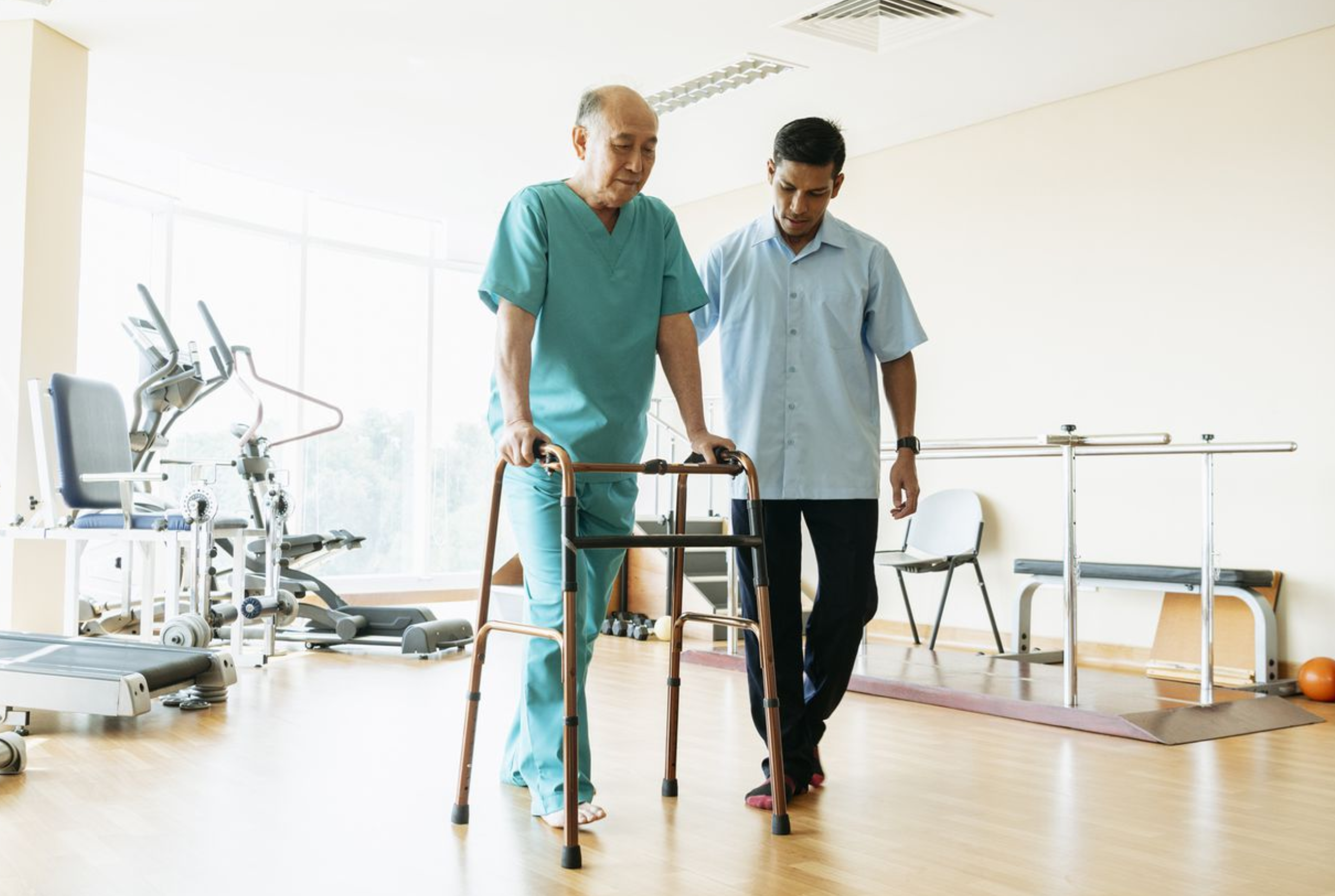Overview
This blog explores the crucial role of physical therapy in cardiac rehabilitation. It highlights how tailored cardiac rehab exercises improve heart health, manage heart conditions, and support long-term recovery through exercise, lifestyle changes, and emotional well-being.
Cardiac rehabilitation (or cardiac rehab) plays a critical role in helping individuals recover from heart disease or surgery and improving their overall heart health. Physical therapy is a cornerstone of this process, offering structured exercises and lifestyle guidance that rebuild cardiovascular fitness and empower individuals to live healthier lives.
In this blog, we’ll explore the role of physical therapy in cardiac rehabilitation, including its benefits, key exercises, and how it supports long-term recovery from heart conditions.
What is Cardiac Rehabilitation?
Cardiac rehabilitation is a comprehensive, multidisciplinary program designed to help individuals recover from heart-related issues such as heart attacks, heart surgery, or chronic conditions like heart failure. The program focuses on improving cardiovascular health through exercise, education, and emotional support.
Who Can Benefit?
Cardiac rehabilitation is suitable for:
- Individuals recovering from heart surgery or a heart attack.
- Those with chronic heart disease or heart failure.
- People manage risk factors like high blood pressure, high cholesterol, or obesity.
By addressing these issues, cardiac rehabilitation improves heart health, reduces the risk of future complications, and enhances the quality of life for those with heart conditions.
The Role of Physical Therapy in Cardiac Rehabilitation
Physical therapy is a key component of cardiac rehab, helping individuals restore their physical function, manage symptoms, and adopt heart-healthy habits. Here’s how physical therapists contribute:
- Personalized Assessment: Physical therapists evaluate the patient’s medical history, physical condition, and fitness level to develop a customized plan.
- Exercise Prescription: They design programs that include a variety of cardiac rehab exercises tailored to the patient’s needs, ensuring safety and gradual progression.
- Monitoring and Guidance: Therapists closely monitor patients during exercise sessions to ensure proper technique, prevent overexertion, and adjust programs as needed.
By working within a multidisciplinary team, physical therapists provide holistic care that improves heart health and supports long-term recovery.
Benefits of Cardiac Rehab Exercises
Cardiac rehab exercises play a crucial role in recovery and prevention. Here are some of the key benefits:
Physical Benefits
- Improved Cardiovascular Health: Structured exercises strengthen the heart muscle, improve circulation, and enhance overall endurance.
- Reduced Complications: Exercise minimizes the risk of blood clots, muscle weakness, and post-surgical complications.
- Enhanced Mobility and Strength: Patients regain flexibility, balance, and muscle strength due to inactivity or surgery.
Psychological Benefits
- Reduced Anxiety and Depression: Physical activity has proven mental health benefits, helping patients feel more confident and in control.
- Improved Emotional Well-being: Regular exercise fosters a sense of accomplishment and optimism.
Through physical therapy, patients achieve better physical and emotional outcomes, making cardiac rehabilitation a vital step in heart treatment.
Types of Cardiac Rehab Exercises
Physical therapy incorporates various types of exercises into cardiac rehabilitation programs, depending on the patient’s condition and goals.
1. Aerobic Exercises
These exercises focus on improving cardiovascular health by increasing heart rate and circulation. Common examples include:
- Walking: Gradual progression in intensity and duration.
- Cycling: Using stationary bikes to build endurance.
- Treadmill Training: Controlled intensity exercises for fitness improvement.
2. Strength Training
Strength training enhances muscle function, which supports overall physical activity and recovery. Examples include:
- Resistance band exercises.
- Bodyweight exercises like squats or lunges.
- Light weightlifting under supervision.
3. Flexibility and Balance Training
Stretching and balance exercises help improve mobility, reduce stiffness, and prevent falls. Common techniques include yoga-inspired stretches and balance drills.
4. Breathing Exercises
Breathing techniques, such as diaphragmatic and pursed-lip breathing, support lung function and alleviate shortness of breath.
These exercises are tailored to each individual’s condition, ensuring maximum safety and benefit.
Physical Therapy for Specific Heart Conditions
Physical therapy programs are adaptable to meet the unique needs of individuals with specific heart conditions:
- Post-Heart Surgery Recovery: Exercises focus on gentle movements to improve mobility and gradually increase physical activity.
- Chronic Heart Disease: Long-term strategies help patients manage symptoms and maintain a healthier lifestyle.
- Congenital Heart Conditions: Customized exercises address the unique challenges faced by individuals with congenital heart issues.
For each condition, physical therapists design programs that prioritize safety, symptom management, and functional recovery.
Lifestyle Modifications Supported by Physical Therapy
Cardiac rehabilitation doesn’t stop at exercises—it includes guidance on adopting heart-healthy habits that promote long-term wellness.
Key Lifestyle Modifications:
- Exercise Adherence: Patients learn how to maintain a consistent and safe exercise routine at home.
- Dietary Changes: Adopting a heart-healthy diet with reduced salt, sugar, and unhealthy fats.
- Stress Management: Techniques like relaxation exercises and mindfulness to reduce emotional strain.
- Quitting Smoking: Therapists provide support and resources for smoking cessation.
These modifications are essential for preventing future heart problems and improving overall cardiovascular health.
Psychological and Emotional Impact of Physical Therapy
Experiencing a cardiac event can take a toll on mental health. Physical therapy addresses this by offering both physical and emotional support.
- Building Confidence: Structured exercises help patients regain trust in their body’s ability to recover.
- Reducing Fear: Close monitoring reassures patients about the safety of physical activity.
- Emotional Support: Therapists encourage a positive mindset, helping patients cope with anxiety and depression.
By addressing both physical and psychological needs, physical therapy ensures a well-rounded recovery.
Choosing the Right Cardiac Rehabilitation Program
Selecting the right program is crucial for recovery. Here are some factors to consider:
- Qualified Professionals: Ensure the program is led by certified physical therapists experienced in cardiac rehab.
- Comprehensive Care: Look for programs that include exercise, education, and emotional support.
- Accessibility and Affordability: Consider program location, cost, and insurance coverage.
Questions to Ask:
- What types of exercises are included?
- How is progress monitored?
- What kind of long-term support is provided?
Making an informed choice helps patients receive the best care tailored to their needs.
FAQs on Cardiac Rehabilitation and Physical Therapy
- What are cardiac rehab exercises?
Cardiac rehab exercises include aerobic, strength, flexibility, and breathing exercises designed to improve heart health and physical function.
- How long does cardiac rehabilitation last?
A typical program lasts 6–12 weeks, but it varies based on individual progress and medical needs.
- Is physical therapy necessary after heart treatment?
Yes, physical therapy is critical for restoring strength, improving cardiovascular health, and preventing future complications.
- Can cardiac rehab exercises be done at home?
Yes, many cardiac rehab exercises can be done at home under guidance from a physical therapist. However, supervised sessions are crucial initially to ensure safety and proper technique.
- What is the success rate of cardiac rehabilitation?
Cardiac rehabilitation significantly reduces the risk of future heart issues. Studies show it can lower the risk of death from heart disease by up to 30% and improve overall quality of life.
A Word From The Doctor–
Physical therapy is an essential part of cardiac rehabilitation, offering tailored exercises and lifestyle support that improve heart health, reduce risks, and enhance quality of life. By committing to a structured program, individuals with heart conditions can regain their strength, confidence, and independence.
If you or someone you know is recovering from a heart condition, consult a qualified physical therapist to design a personalized cardiac rehabilitation plan. Prioritize your heart health today and embrace a stronger, healthier tomorrow.
Schedule a consultation with Dr. Sanul Corrielus right away if you have questions about your heart health!

